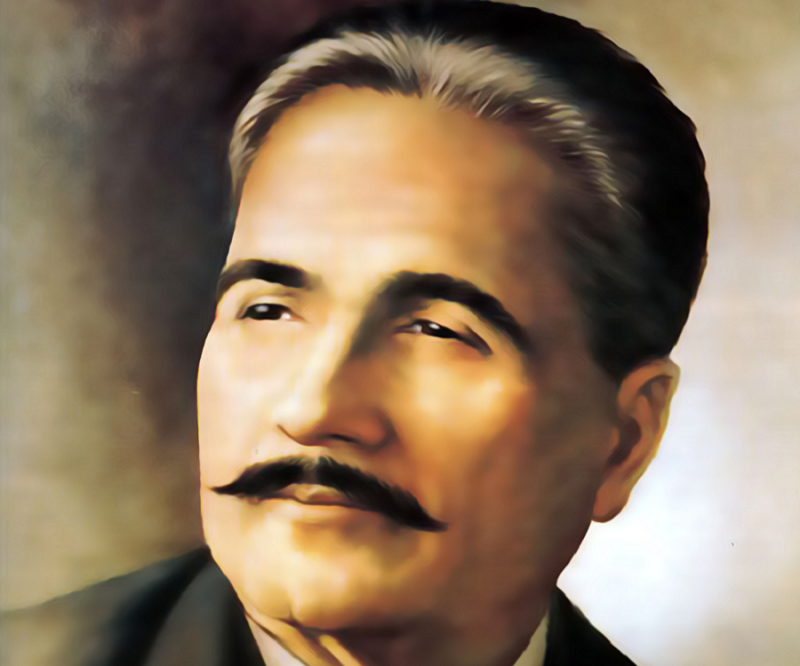Dr Muhammad Iqbal was a great thinker and poet who is paid rich tributes for his contributions towards creation of Pakistan by presenting concept of a separate homeland for the Muslims of the sub-continent generally round the year but particularly on his birth anniversary on November 9 and death anniversary on April 21 every year.
On such occasions, different aspects of the life, teachings and poetry in Urdu and Persian of the great philosopher and poet are highlighted. But one aspect has not been highlighted on all these occasions is that Dr Muhammad Iqbal was an elected member of the Punjab Legislative Council from 1927 to 1930 from Lahore City Urban on a seat for Muhammadans. Those days, Muslims were described as Muhammadan.
Punjab Legislative Council was headed by Chaudhry Sir Shahab-ud-Din as the President. It had five ex-officio members and ministers including Mian Sir Fazl-i-Hussain as Revenue Member, Malik Feroze Khan Noon, Minister for Local Self Government, and Sardar Jogendra Singh Minister for Agriculture whose plaque is on display on the Punjab Assembly Chambers for inauguration of the building, as well as Sir Geoffrey deMontmorency as Finance Member and Manohar Lal as Minister for Education.
The Council had 13 nominated officials as its members, all Britons, and 8 nominated non-officials as representatives of General Interests, of the European and Anglo-Indian communities, of the Labour Classes, of the Indian Christians and of the Punjabi Officers and Soldiers of His Majesty’s Indian Forces. The Council has 67 elected members from rural and urban areas of the then Punjab.
As a member of the Punjab Legislative Council, Dr Muhammad Iqbal had delivered an important speech on March 10, 1927, highlighting different aspects of education while commenting on the facts and figures given in the Report on the Progress of Education in the Punjab for the year 1925-26, some extracts from which are reproduced here:
“They (earlier speakers) have emphasised the fact that education is a common interest, that it affects all classes of the people of this land Hindus, Muhammadans, Sikhs, capitalists and labourers but they have not looked at the problem from the standpoint of a foreign government. A disinterested foreign government is a contradiction in terms. The foreign government in this country wants to keep the people ignorant... My submission is that in so far as primary education is concerned , it is absolutely necessary in the interest of this province to adopt the principle of compulsion at once.”
It is well-known that Allama Muhammad Iqbal hailed from a Kashmiri family which had migrated from Kashmir in the early part of the 19th century and settled in Sialkot. Allama Iqbal had lived at several places in Lahore at varying periods including the upper story of a shop of Attar Chand Kapoor Booksellers in Anarkali, Mcleod Road and also somewhere inside Bhatti Gate from 1906 to 1935.
Construction of Javed Manzil on the road from Lahore Railway Station to Garhi Shahu at the back of Cairns Railways Hospital, which has since been turned into Iqbal Museum housing personal belongings etc., of the great thinker and poet, make for an interesting story which may not be know to many.
While residing on Mcleod Road in 1934 Allama Iqbal had bought a piece of land measuring about seven kanals in open auction at Mauza Garhi Shahu in the name of his younger son Javid Iqbal. When the construction of the house was completed at a total cost of Rs 43,025, he had shifted there from Mcleod Road. Javed Iqbal was the owner of the house and Allama Iqbal lived there on rent. Allama Iqbal had got a written a document on stamp paper in May 1935 according to which he had rented three front rooms for Rs 50 per month and the amount was paid regularly to his son/landlord Javed Iqbal and receipt of the same was duly acquired. Within four days of shifting to the newly-constructed house, Allama Iqbal suffered a great personal loss when his wife, and mother of Javed Iqbal, Sardar Begum, expired on May 24, 1935.
Allama Iqbal had lived at Javed Manzil till his death on April 21, 1938, nine year before his concept of a separate homeland for the Muslims was translated into reality under the inspiring leadership of Quaid-i-Azam Mohammad Ali Jinnah on August 14, 1947.
Quaid-i-Azam Mohammad Ali Jinnah along with his sister Mohtarma Fatima Jinnah had visited Allama Iqbal at Javed Manzil in 1936. Hindu leader Pandit Jawahar Lal Nehru was also a great admirer of Allama Iqbal and had visited him at Javed Manzil.
On the asking of military ruler, President/Chief of Army Staff General Muhammad Zia ul Haq, Dr Javed Iqbal sold Javed Manzil along with all personal documents, belongings and articles of personal use to the Federal Government for Rs 3.5 million and it was turned into Iqbal Museum in December 1977.
Dr Javid Iqbal had purchased a bungalow of his choice, as per direction of the President/COAS to the Punjab Government, on Main Boulevard in Gulberg Lahore where had lived till his death more than year back with wife Justice (retd) Nasira Javid Iqbal.
Dr Javid Iqbal’s bungalow in Gulberg is also a place of great interest for the researchers and scholars of Iqbaliyat, in one of its room there is a big mural which is the great art work of prominent Pakistani artist Jimmy Engineer, who has illustrated Allama Iqbal’s collection of Persian poetry “Javid Namah” in 1980/81.
There is lot to see for the researchers and scholars of Iqbaliyat at the Iqbal Museum , which is looking for visitors as none go there despite the fact entry is free.
As a member of the Punjab Legislative Council, Dr Muhammad Iqbal had delivered an important speech on March 10, 1927, highlighting different aspects of education.






